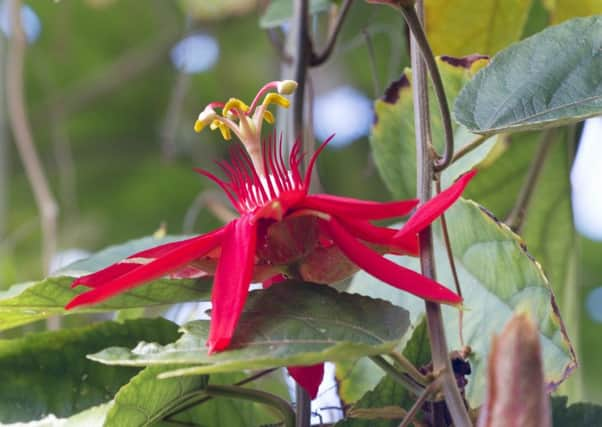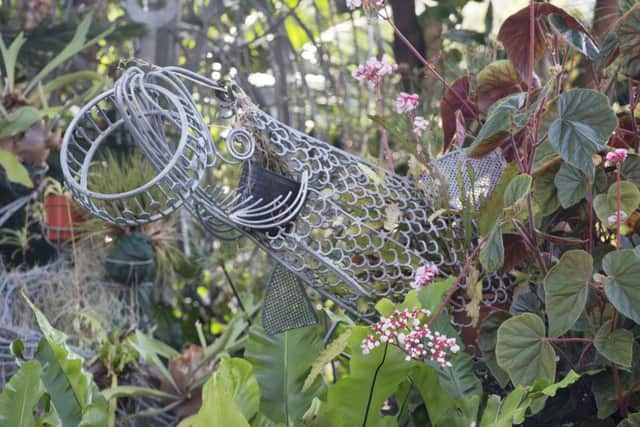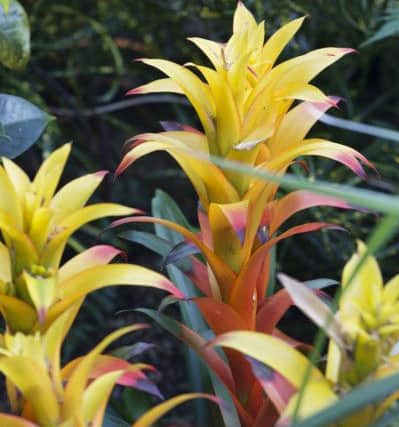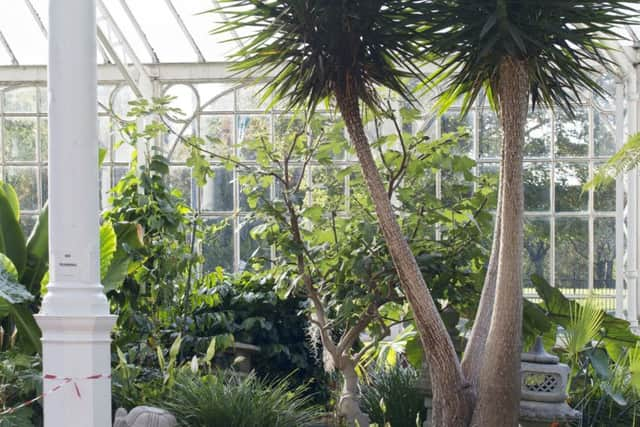Winter Gardens tell Glasgow's story as second city of the empire


Exotic plants have a lure that is irresistible, particularly at the point of the year furthest from the last memory of hot, dry weather. It’s why glasshouses were invented, and on Glasgow Green the air is warm with plants carrying the scents of cardamom, fig, mango, coffee and oranges.
At the Winter Gardens, trees and plants from around the world tell Glasgow’s story as the second city of the empire. The glasshouse has been re-landscaped and replanted with tropical and subtropical plants.
Advertisement
Hide AdAdvertisement
Hide AdThe refurbishment came about partly because it was time to refresh the plants, but mainly because the staff at the People’s Palace museum wanted to combine their work on Glasgow’s empire and trade history with the plants in the glasshouse next door.


The Doulton Fountain facing the People’s Palace represents the countries important to trade with Britain: India, South Africa, Australia and Canada. The Winter Gardens takes its cue from these four corners of the world to explore Scotland’s horticultural inheritance from many more countries and regions. These include tea, mango, cardamom and fig from India as well as the bird of paradise (Strelitzia regina), ice plant, several aloes and the first species of pelargonium (Pelargonium cucullatum), introduced into Britain in 1690 from South Africa. From Australia there are several species of eucalyptus, the Moreton Bay chestnut and the Wollemi pine – this recently discovered tree species is more than 91 million years old. More palms have been added to the already mature number, contributing to the exotic feel. The fishtail palm (Caryota mitis) is native to India and Southeast Asia. It is the only palm with leaves that are subdivided twice. In India, edible starch is extracted from the stem and the palm heart is eaten. It is also tapped for sap that is made into sugar or fermented.
The products that these plants brought to Scotland over the centuries are now part of an educational journey being offered to visitors of the Winter Gardens. It begins outside the glasshouse, with a carved “totem pole”. The work by Robert Coia stamps the presence of Pacific coast Native Americans on Glasgow though its Canadian journeys – Canada was the only country on the Doulton Fountain that could not be represented through subtropical plants.
The glasshouse contains the origins of many of the ingredients in our kitchens, with plants of sugar cane, tea, coffee, rice, passion flowers, jasmine, bamboo, papaya, oranges, lemons, a dragon tree and manuka, from which honey is made. The collection highlights not just the aesthetic appeal of the plants but their culinary and medicinal uses. For example lemongrass (Cymbopogon citratus), abundant in the Philippines and Indonesia, has been found to have antifungal properties and protect the stomach lining against ulcers. The wonderfully named shampoo ginger (Zingiber zerumbet) is native to India and spread eastwards through Polynesia before arriving in Hawaii with early settlers. As well as being used for food flavouring, this member of the ginger family contributes to its well-known uses for combating nausea and indigestion, and was also used for washing hair.
If camphor rings a bell, it’s because the tree, Cinnamomum camphora, produces a crystalline substance used as a decongestant. Native to China, Japan and Taiwan, camphor is also used in the making of incense and as an insect repellent.


Not all uses are domestic. The balsa wood tree (Ochroma pyramidale), which can grow up to 98ft in height, produces a very lightweight wood that is used as a composite in producing wind turbine blades and table tennis bats. It is also used in laminates along with fibreglass to make boat decks and surfboards – and memorably in the construction of the de Havilland Mosquito aircraft in the Second World War.
It is a dazzling array of plants and their uses, as absorbing in its education as it is warming to the winter-worn soul. Stuart Purvis, one of the gardeners involved in the project, explains its aims. “The planting in the Winter Gardens was rather tired in appearance, with some areas requiring a major overhaul. There was an opportunity to make considerable improvement by the reorganisation of the existing planting and the addition of new plant material.
“The planting regime was renovated with a view to increasing the educational value of the glasshouse. The objective was to ensure that the improved planting scheme incorporated a high-amenity value as the glasshouse provides a very popular civic space that is also used regularly for private hires and events where stunning displays are expected throughout the year.”
Advertisement
Hide AdAdvertisement
Hide AdPerhaps the greatest challenge in upgrading the planting was the requirement to improve the quality of the growing medium which previously consisted almost entirely of spent peat, Stuart explains.


“The peat was replaced with top soil and additional organic material was incorporated. The introduction of a soil-based compost represented a considerable amount of manual work. The planting beds were also considerably raised in height to create a less flat planting area. A significant quantity of rock was obtained to help contain the planting beds, giving more height and discouraging visitors from walking through the planted areas.”
With plants like these, a trip to the tropics is not as far away as you may think.
• For more information visit www.glasgowlife.org.uk/museums/peoples-palace